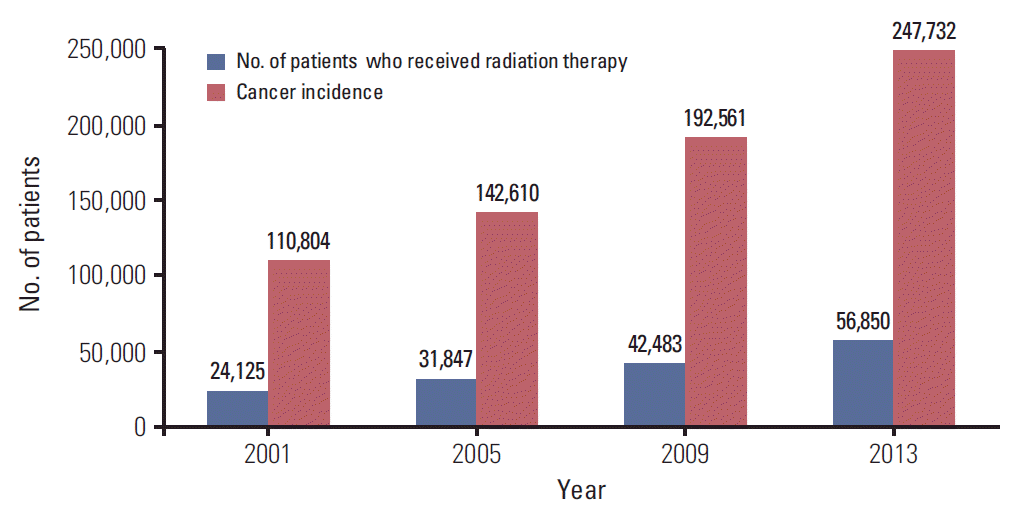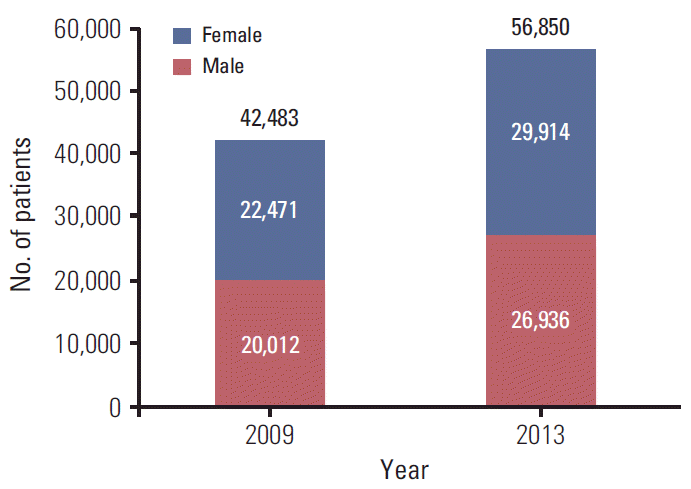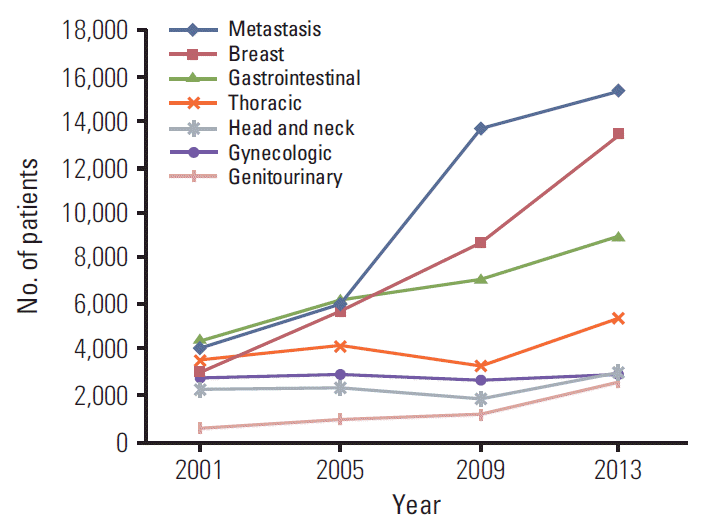1. Jung KW, Won YJ, Kong HJ, Oh CM, Cho H, Lee DH, et al. Cancer statistics in Korea: incidence, mortality, survival, and prevalence in 2012. Cancer Res Treat. 2015; 47:127–41.

2. Lee TJ, Kim S, Cho HJ, Lee JH. The incidence of thyroid cancer is affected by the characteristics of a healthcare system. J Korean Med Sci. 2012; 27:1491–8.

3. You SY, Kim MS, Ji YH, Cho CK, Yang KM, Ryu HJ. National statistics of radiation oncology in Korea (1999-2001). J Korean Soc Ther Radiol Oncol. 2004; 22:234–6.
4. Kim MS, Ji YH, You SY, Cho CK, Yang KM, Ryu HJ. National statistics of radiation oncology in Korea (2002-2004). J Korean Soc Ther Radiol Oncol. 2006; 24:77–80.
5. Kim MS, Ji YH, You SY, Cho CK, Yang KM, Ryu HJ, et al. National statistics of radiation oncology in Korea (2005). J Korean Soc Ther Radiol Oncol. 2006; 24:207–9.
6. Ji YH, Kim MS, You SY, You DH, Choi MS, Jung HJ. National statistics of radiation oncology in Korea (2006). J Korean Soc Ther Radiol Oncol. 2008; 26:131–3.
7. Song SY, Ahn SD, Chung WK, Shin KH, Choi EK, Cho KH. Development of new on-line statistical program for the Korean Society for Radiation Oncology. Radiat Oncol J. 2015; 33:142–8.

8. Kim L, Kim JA, Kim S. A guide for the utilization of Health Insurance Review and Assessment Service National Patient Samples. Epidemiol Health. 2014; 36:e2014008.

9. Ji YH, Kim MS, Jung H, Yoo SY, Cho CK. Clinical characteristics of radiation oncology in Korea during past 10 years. J Korean Med Sci. 2009; 24:1165–9.

10. Jung KW, Won YJ, Park S, Kong HJ, Sung J, Shin HR, et al. Cancer statistics in Korea: incidence, mortality and survival in 2005. J Korean Med Sci. 2009; 24:995–1003.

11. Jung KW, Park S, Kong HJ, Won YJ, Lee JY, Seo HG, et al. Cancer statistics in Korea: incidence, mortality, survival, and prevalence in 2009. Cancer Res Treat. 2012; 44:11–24.

12. Jung KW, Won YJ, Kong HJ, Oh CM, Seo HG, Lee JS. Prediction of cancer incidence and mortality in Korea, 2013. Cancer Res Treat. 2013; 45:15–21.






 PDF
PDF Citation
Citation Print
Print




 XML Download
XML Download